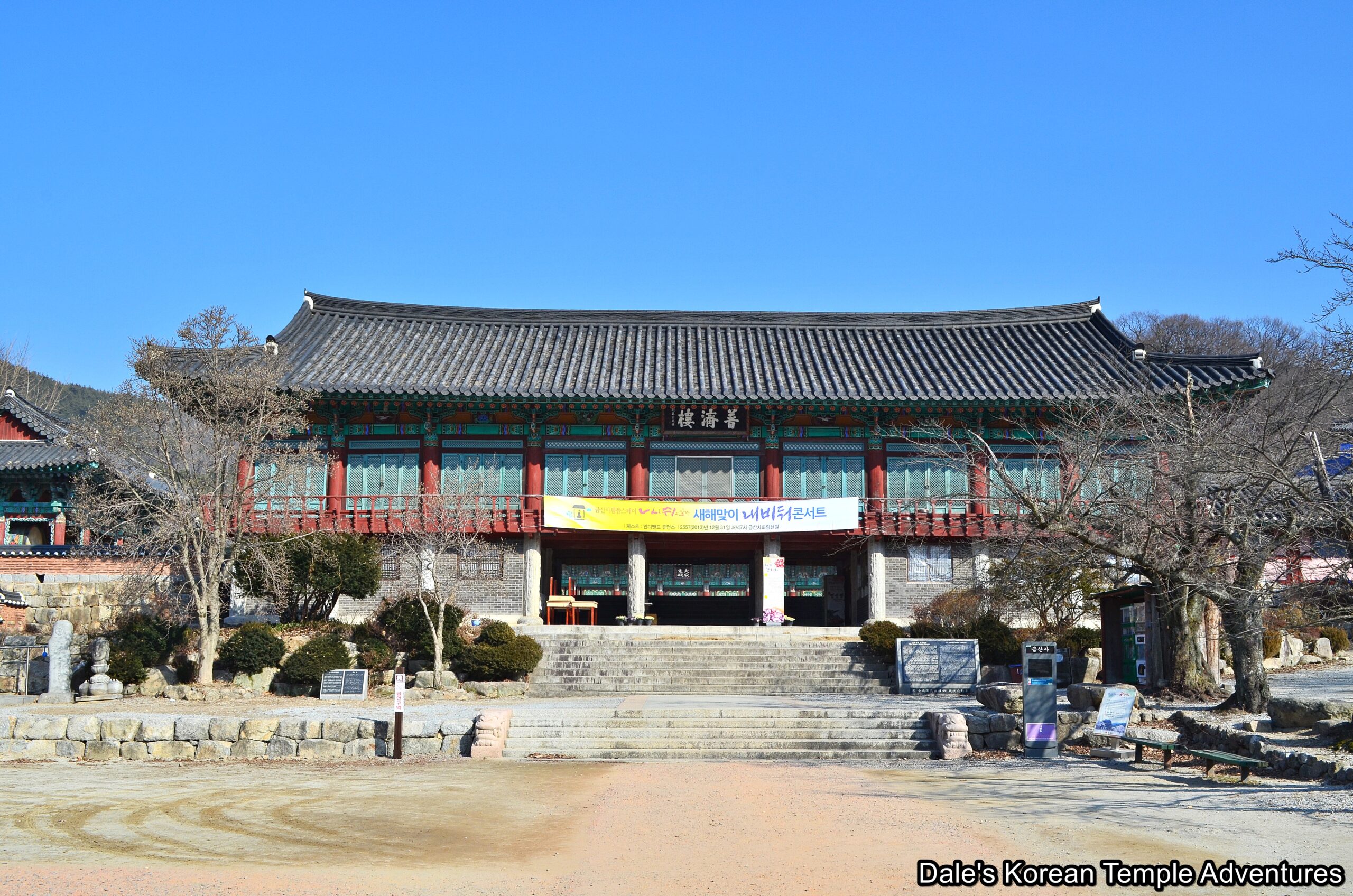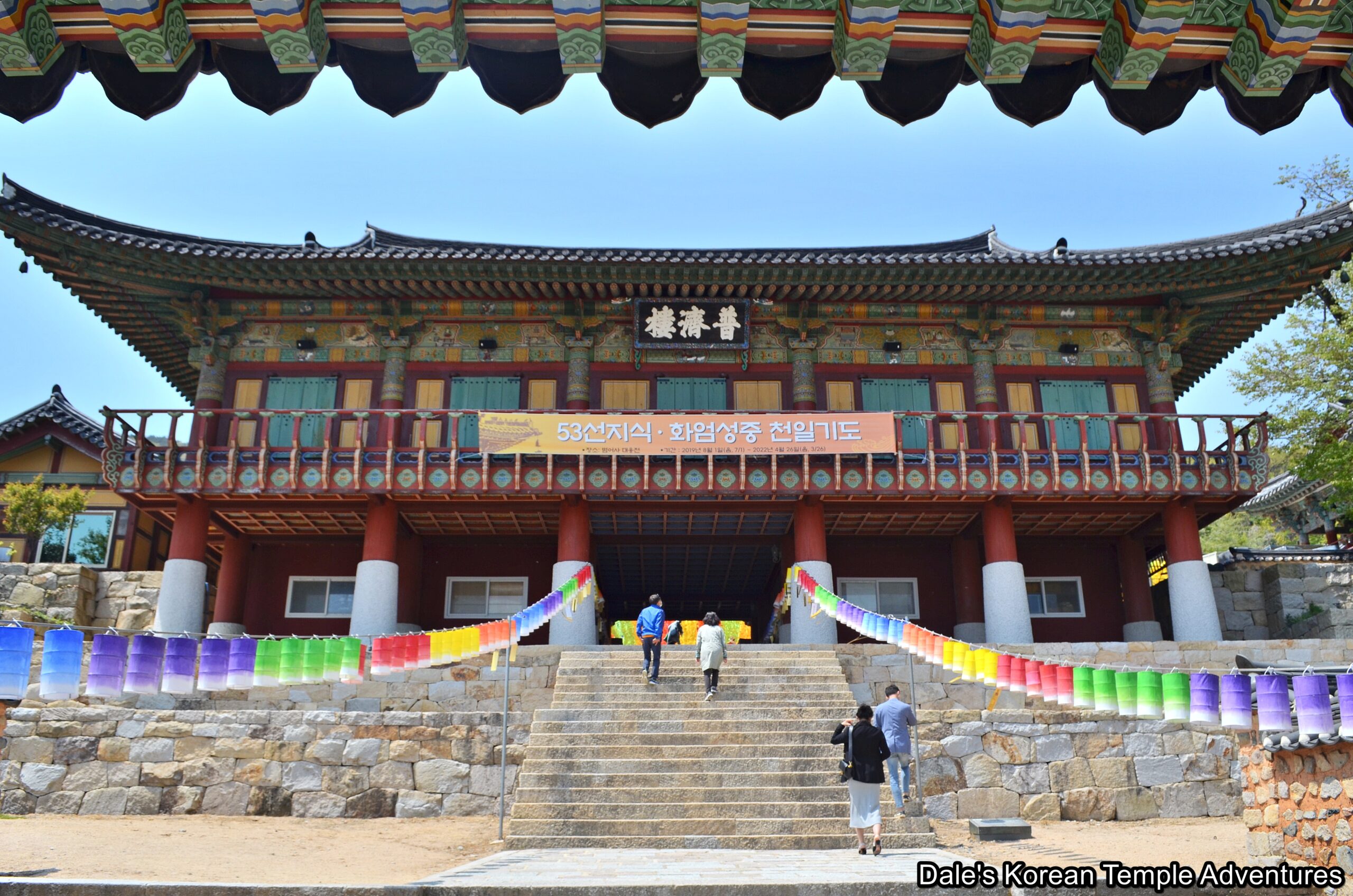Universal Salvation Pavilion – Boje-ru: 보제루
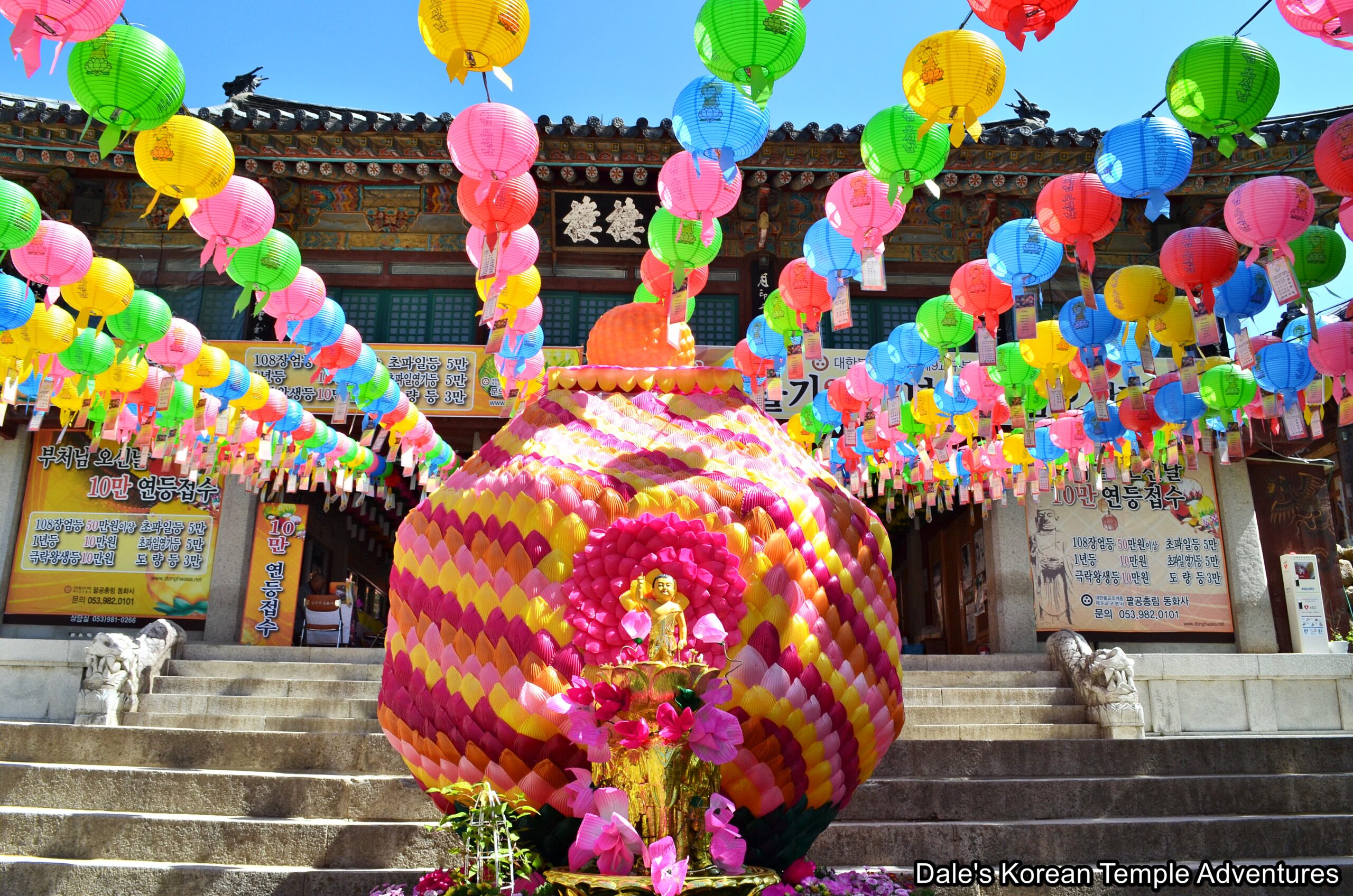
Boje-ru Pavilion Design
The fifth and final entry gate at a Korean Buddhist temple is actually a pavilion/entry gate. This pavilion/entry gate is sometimes referred to as the Boje-ru Pavilion, which means “Universal Salvation Pavilion,” in English. The pavilion is a two-story structure that is positioned between the Beopdang (main hall) and the Bulimun Gate (The Gate of Non-Duality). Specifically, Boje means “universal salvation,” which is a reference to the casting of a net across Samgye (Realm of Desire), and the desire in Mahayana Buddhism to rescue all sentient beings. “Ru,” on the other hand, simply means “pavilion” in Chinese characters (Hanja). Typically, the first story of the structure acts as the final gateway to the main temple courtyard. Traditionally, the ceiling to the first story of the structure is quite low. This is made in this manner so as to force visitors to stoop as a sign of humility before entering the inner sanctum of the temple grounds. The second story, on the other hand, is where monastic lectures and non-ceremonial Dharma assemblies (beophoe) are conducted simply because they are too large to be done inside the main hall.
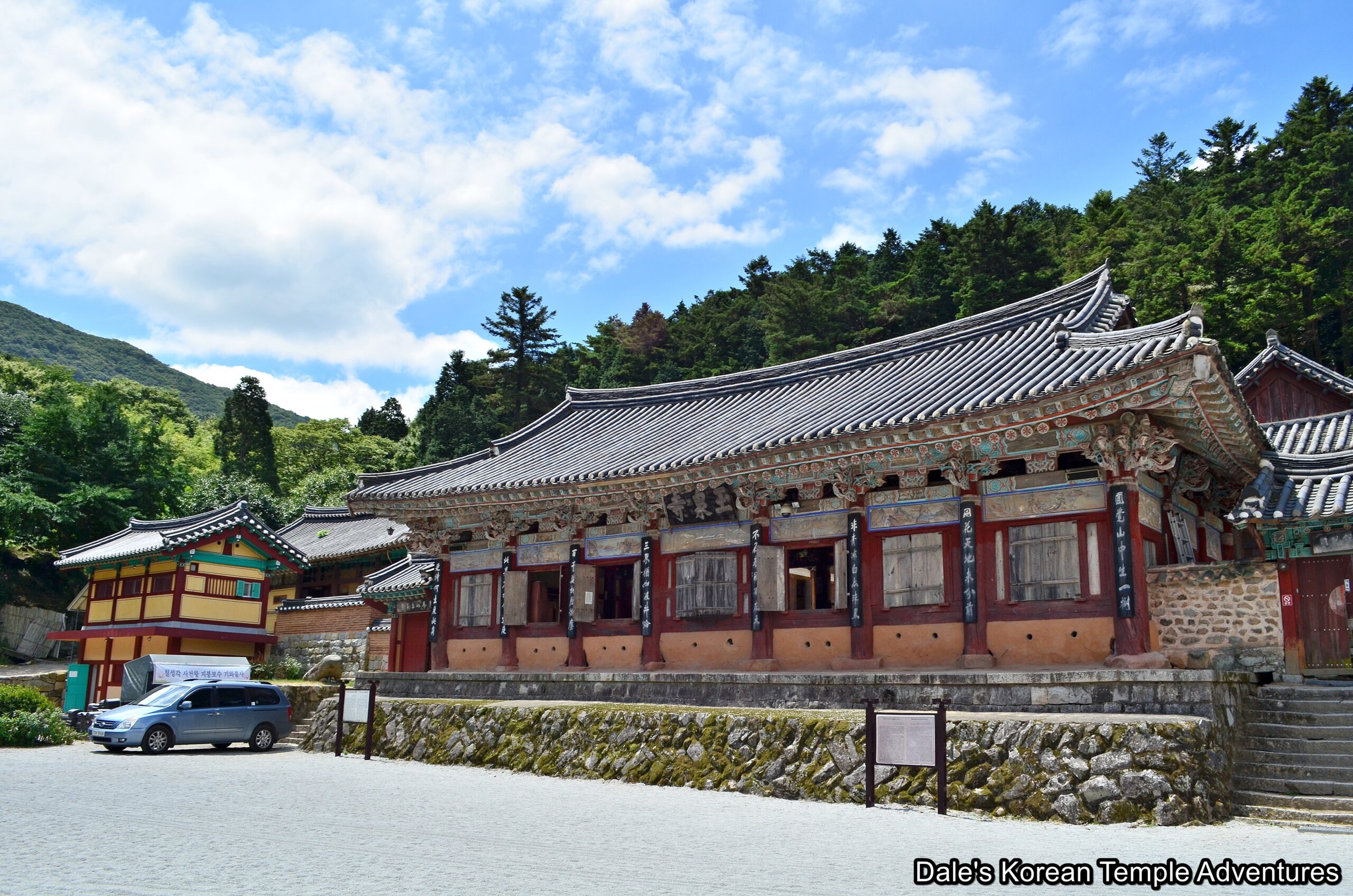
Some Boje-ru Pavilions were used as protection against armed forces like the Japanese after the Imjin War (1592-98). A great example of this can be found at Okcheonsa Temple in Goseong, Gyeongsangnam-do. Specifically, it was used for military training and guarding the temple buildings from invaders. This type of pavilion is called a Jabang-ru Pavilion. This pavilion can also be called a “Guwang-ru,” which is a reference to endless space and the light that radiates in all nine directions from this temple pavilion. A fourth name this pavilion goes by is Manse-ru, which literally means “Ten Thousand Times,” in English, which is another expression of the limitless nature of the pavilion. The reason that this pavilion potentially has one of these four names is that they are usually used for large conferences or gatherings to discuss the Buddhist teachings.
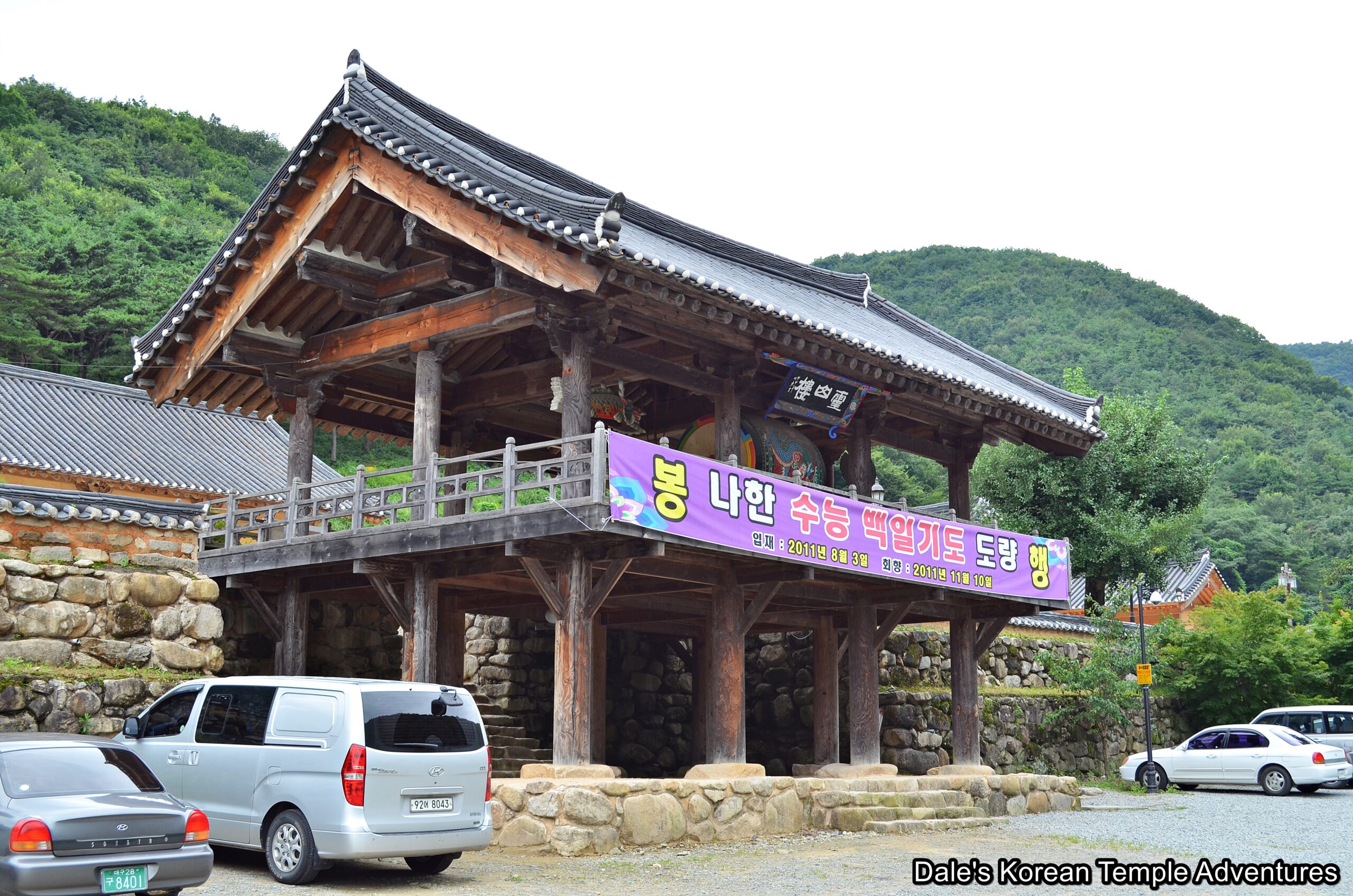
Also, if a temple is smaller in size, or a hermitage, like the historic Geojoam Hermitage in Yeongcheon, Gyeongsangbuk-do, it’s called a Uhwa-ru Pavilion. The reason it’s called this is that instead of being a conference hall on the second floor, it houses the four instruments that are normally housed in the temple’s bell pavilion, or “Jong-ru,” in Korean. In English, the Uhwa-ru, means “Flowery Rain Pavilion.” According to legend, Bicheon (Flying Heavenly Deities) were so moved by the Buddha’s teachings that they spread flower petals from the sky to praise the Buddha, Seokgamoni-bul. So the Uhwa-ru Pavilion is yet another symbolic connection to the spreading of the Dharma.
Great Boje-ru Pavilion Examples
Great examples of the Boje-ru Pavilion can be found at Donghwasa Temple in Daegu; Geumsansa Temple in Gimje, Jeollabuk-do; Dasolsa Temple in Sacheon, Gyeongsangnam-do; Naesosa Temple in Buan-gun, Jeollabuk-do; and Beomeosa Temple in Geumjeong-gu, Busan.
